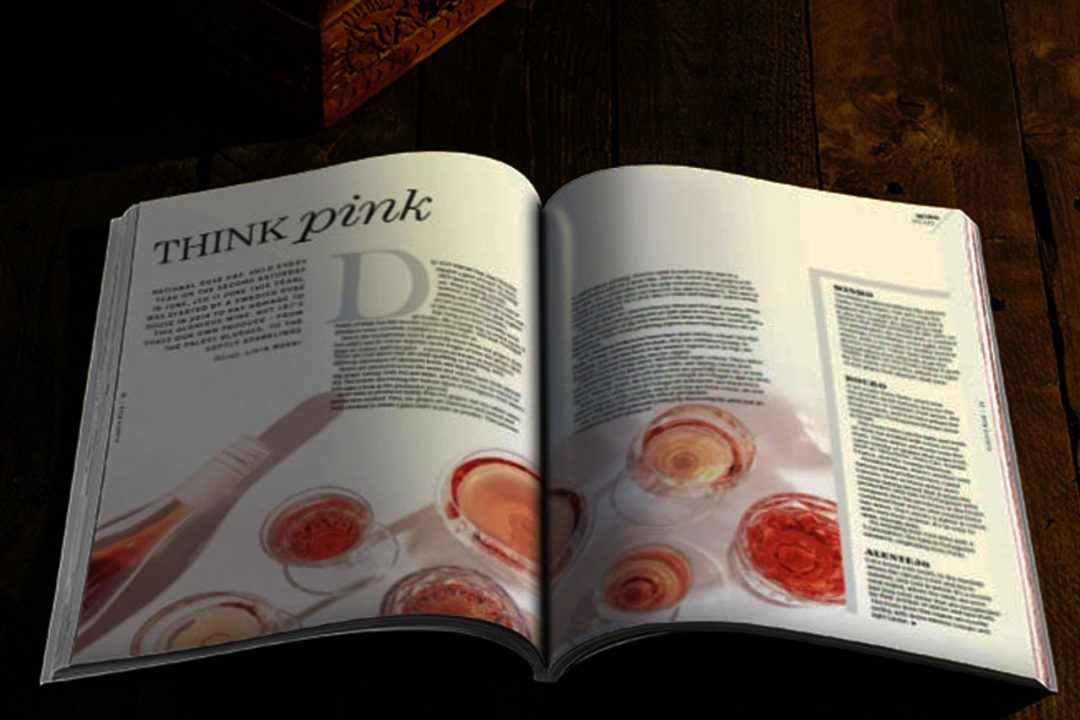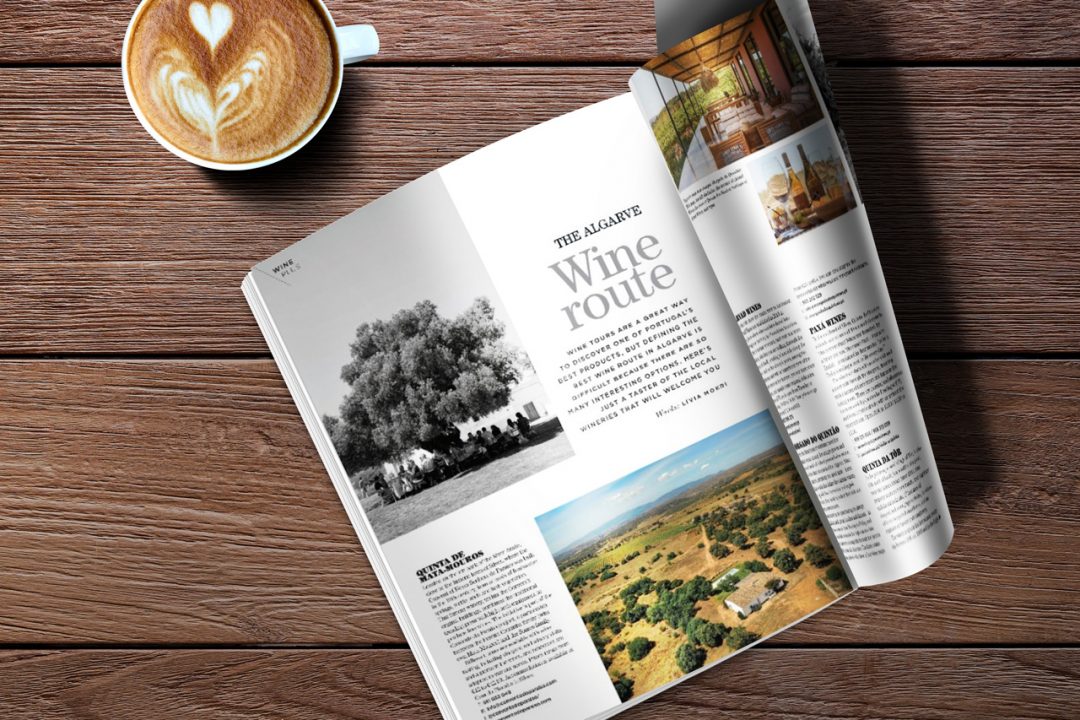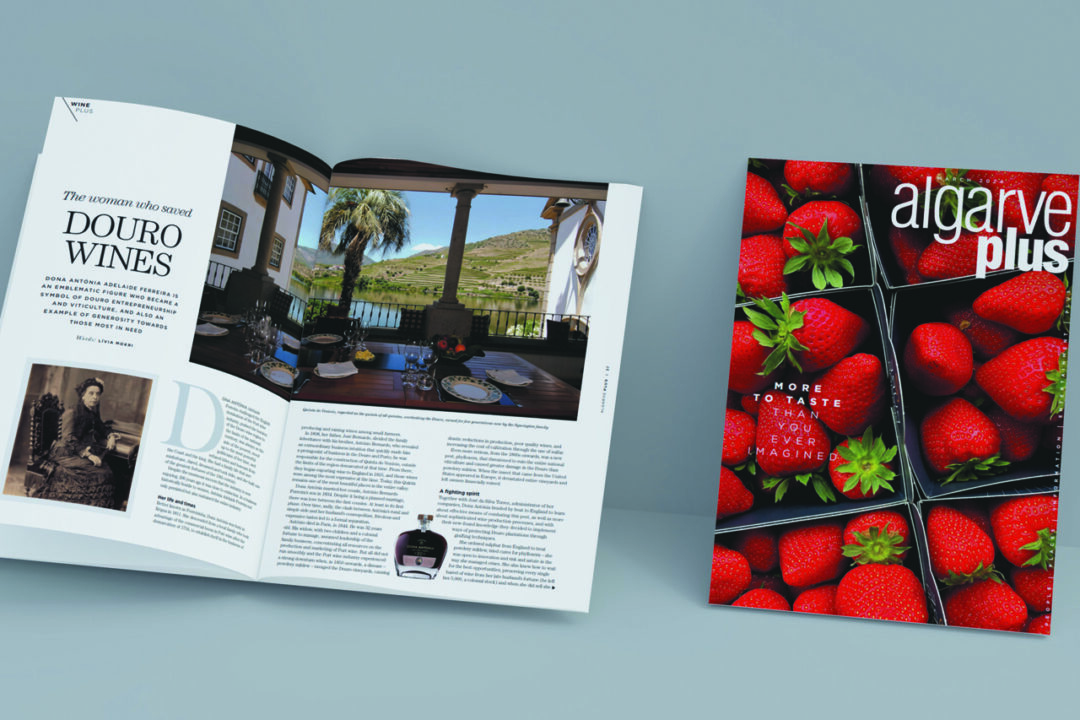Think Pink – Let’s celebrate National Rosé Day every year on the second Saturday in June and make a toast to the Portuguese rosé wines from the palest blushes to the soft sparklings.
I am happy to share that the June issue of the Algarve Plus Magazine has already been published, with my new article!
The magazine is readable online or downloaded for free here.
Enjoy!
Or read here the whole article:
Think pink!
Let’s celebrate summer, friends, and all things pink on National Rosé Day! Held every year on the second Saturday in June, this year falling on June 11, National Rosé Day was started by a Swedish Rosé House in 2014 to pay homage to this glorious summertime wine.
What if I told you it was a wine enjoyed by both Jimi Hendrix and Queen Elizabeth?
Not many people need an excuse to open a fresh bottle of rosé wine. When the sky clears up, the sun is shining and the sunbeds come out, it’s the perfect time to grab a glass of the silky pink drink. But what is the rosé wine like exactly and how is it made?
Nowadays, rosé is so widely popular, that it’s considered a wine to quench thirst. An easy-going drink to sip on while you’re cooking or a refreshment offered to guests before having dinner.
The rosé is generally made from red grapes (but not only!) and is a very versatile wine. Rosé will be lighter in color than red wine, and deeper in color than white wine. The pink color of rosé wine depends on the time the grape skin stays in contact with the juice, also known as maceration. There are also rosé wines that are semi-sparkling or sparkling, with different intensities of sweetness levels and dryness.
PRODUCING METHOD
The rosés are produced in all major countries and can be made from almost any grape variety, both red and white, and the wines can be sweet or dry.
But before discovering the various types of Portuguese rosé wines, find out how these wines come about.
Rosé wine is produced mainly from red grapes but in a white wine production way. What does this mean?
These drinks are made by leaving the grapes soaked in their skins for a while.
First, the wine grapes are harvested and sorted and the bunches of grapes are cut down. The red grapes are crushed to obtain the juice to be as pale as possible. This process is called direct pressing.
Then the must is soaked on the skin in a fermentation tank for a short time. Since the color of the grapes is in the skin, the contact time between the pulp and the skin determines the intensity of the color of the rosé wine.
Before the wine turns deep red, the skin is removed, so at the end of the fermentation, the skin is no longer inside. The wine is stored in containers for a short time to settle and stabilize. And finally, the wine is clarified, bottled, and then marketed as soon as possible.
STYLES
Dry rosé wines are characterized by citrus and crunchy red fruit aromas. They are usually consumed young and are pale pink in color. In Portugal, the best examples of dry rosé wines come from the Lisboa, Douro, Beira Interior, or Vinho Verde regions with the coolest temperatures.
Soft, medium-bodied rosé wines have more intense colors and ripe fruity aromas. Tasty wines with salmon pink color, and are consumed young. In Portugal, you can find them in the warmer regions such as Tejo, Alentejo, Peninsula de Setúbal, and the Algarve.
Sweet rosés are fruity wines, having residual sugar content. These wines are characterized by flavors of ripe fruits, and various colors from salmon to ruby. Very soft wines that are generally semi-dry or semi-sweet. Its best-known example in Portugal is the Mateus Rosé.
ROSÉS IN PORTUGAL
Portugal doesn’t actually drink that much rosé because there aren’t very many Portuguese rosé wines out here, but there are some regions that are now discovering and experimenting with the production of rosé. But some of them are pretty famous as well.
Let’s start our journey by discovering the regions of the most famous Portuguese rosés.
MINHO
The Minho region produces the famous Vinho Verde wines. This isn’t only the biggest wine region in Portugal, but the coldest: it’s difficult to find grapes that ripen perfectly in this area. It’s an exciting challenge for winemakers, but in this region, one can manage to obtain light, fresh wines, with a nice level of acidity and low alcohol content. Other than white wine, they produce rosé and reds from the Vinhão grape (in the Douro Valley it goes by the name of Souzão), which is a type of red grapevine that appears dark blue.
DOURO
A bit south from there, you’ll find the world’s most famous area for the production of fantastic Port wines, the Douro region. It’s the same territory where they produce the emblematic Portuguese Mateus Rosé.
The rosés here can be light and fresh, or even full-bodied with notes of red fruits. These wines are made from the same variety of grapes that make Port wines, such as Tinta Roriz, Tinta Cão, Touriga Franca, and the Touriga National.
Besides Mateus, there’s another very famous wine produced here, called Lancers. Both of these wines were created during World War II when the production and sale of Portuguese wine collapsed. But the producers in the Douro combined their forces and created these two wines. The Lancers is lighter in color, with very fresh aromas. It’s an easy-to-drink, very friendly wine.
Try enjoying your rosé wine with a ‘Francesinha’, the typical Portuguese sandwich, originating from Porto.
ALENTEJO
Let’s travel a bit more south, to Alentejo where the climate is hot and dry in summer, and cold in winter. It’s a mostly rural region, where the lands are poor, but they offer wines that are recognizable from their aromas of spices and ripe fruits. The rosés from this region are mostly earthy, with more intense colors and light tannin.
MATEUS ROSÉ
The year 1942 was a very turbulent one but it did spawn one of the world’s most iconic and popular table wines. It was the year that Sogrape, a small company based in the north of Portugal, started trading for the very first time.
A range of wines was introduced in 1943 but it was Mateus Rosé that quickly distinguished itself from the rest and soon became a best seller.
And last year, Sogrape has already sold more than 20 million bottles of Mateus Rosé in over 120 different countries.
Their distinctive flagon-shaped bottles were inspired by the hip flasks carried by soldiers during World War I. With a longer neck and a smaller label, its new design is softer and more appealing than before with the logo stylishly engraved on the glass.
One of the most frequently pictured sights in the whole of Portugal is the Solar de Mateus, the country house depicted on the labels of this world-famous wine. Located just 3 km from the city of Vila Real in northern Portugal, its white stucco walls and extravagantly carved stonework detail are typical of the local baroque style of architecture, while the formal gardens feature a thirty-meter-long cedar-shaded tunnel. Inside, there are period pictures, rich furnishings, and an assortment of rare exhibits.
Mateus Rosé is a palatable wine produced in a very appealing shade of pink with a strikingly fresh bouquet. A tempting wine. Its taste is very well balanced and slightly effervescent, brilliantly complemented by a slightly fizzy finish, making it an ideal accompaniment for shellfish, salads, and white meat. It should be served chilled in a flute or in a tulip-shaped red-wine glass, ideally between 6 – 8ºC.
With its lively raspberry color, the recently-launched Mateus Rosé Tempranillo has an intense fruity aroma with hints of strawberry and a touch of sweetness. The palate is slightly dry with a refreshing acidity that leaves a lasting taste in the mouth.
Rosé wines have their own magic that conquers more and more wine lovers. So, next time you are asked ‘white or red’, try answering ‘rosé’!
Experience endless summers in pink, and enjoy happiness with every glass of rosé.






No Comments Found